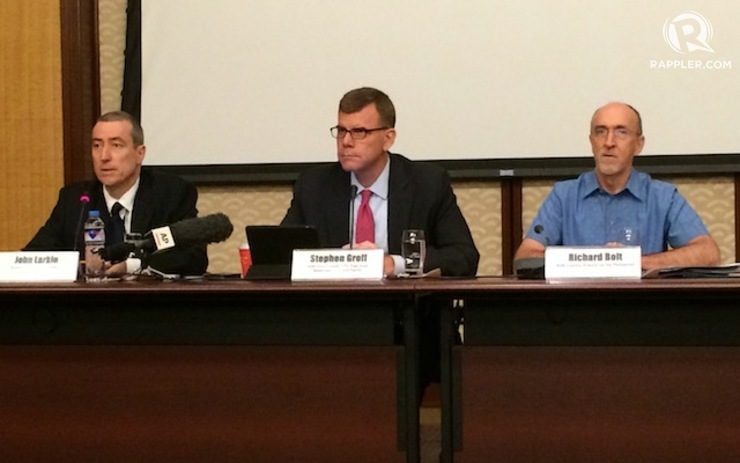SUMMARY
This is AI generated summarization, which may have errors. For context, always refer to the full article.

MANILA, Philippines – The Asian Development Bank (ADB) on Monday, November 3, took up the cudgels for the Philippine government, saying that they are “impressed” with efforts to rehabilitate areas hit by Super Typhoon Yolanda (Haiyan).
Despite challenges, rehabilitation efforts in Eastern Visayas were even “moving faster” than what was seen during the earthquake and tsunami that struck Aceh, Indonesia, 10 years ago, said ADB Vice President on East Asia, Southeast Asia and the Pacific Stephen Groff.
The 2004 Indian Ocean tsunami and earthquake killed over 120,000 people. The wrath of Yolanda left more than 6,300 individuals dead, affecting 16 million individuals or 3.4 million families, and destroying more than one million homes.
Groff ackowledged that post-Yolanda efforts in Eastern Visayas – close to one year since the typhoon wreaked havoc – continue to be caught between recovery and reconstruction, the next steps after immediate relief efforts.
ADB expects reconstruction in Yolanda-affected areas to take 4 to 5 years – the usual amount of time it takes for areas in similar situations to recover, Groff said.
It took 3 months for President Benigno Aquino III to approve the P170.7 billion ($3.8 billion) master plan for rehabilitation efforts after it was handed to him. It took close to a year before the blueprint was finalized. (Yolanda a year after: Tacloban ‘township’ to rise)
Groff said reconstruction efforts post-Yolanda is expected to gain momentum in 2015.
One year since the tragedy, only 2% of permanent shelters needed are set to be built. While no major disease outbreaks were recorded, hundreds of clinics have yet to be repaired as many continue to suffer from grief and depression.
For Groff, gauging the performance of both local and national governments post-Yolanda depends on perspective especially in a disaster of such scale and scope. There will always be tension between doing things fast and doing things right, he said.
“It’s not wrong to say, ‘I want to get these people to the shelter and I don’t really care so much whether this is good quality shelter or not. It’s raining and we need the shelters.’ That’s one perspective that certainly we can bring to the debate,” Groff said.
“Other people would say, ‘Yes, we need to get these people under some kind of temporary shelter, but what I want to do is to make sure we put them in structures that would withstand (intense weather conditions). So I’m willing to (let them stay) in slightly less comfortable structures in a relatively short period of time to make sure that we can give them shelter that’s permanent, a house that will stay safe for a long period of time.’ Those are not necessarily points of view that are completely diametrically opposed,” he added.
The problem is not systemic, Groff said, but are rather limited to “individual challenges.”
More jobs needed
Poverty incidence in Eastern Visayas rose from 41% before Yolanda to 55% after the typhoon.
Although businesses in the area recovered fast, ADB country director for the Philippines Richard Bolt said more jobs are needed in the area.
“The problem is income. If you don’t have the power to purchase that you did pre-storm, this will affect businesses. Worst affected areas will continue to be Eastern Samar and Northern Leyte,” Bolt said.
ADB has reallocated up to $150 million worth of ongoing projects to support the government’s conditional cash transfer program, as well as road improvement and agrarian projects, on top of $900 million worth of assistance earlier announced.
Of the $900 million amount, $500 million has been allocated to bolster government efforts for rehabilitation and reconstruction. Groff said $300 million has been disbursed to the government while the rest will be disbursed in 2015.
The remaining $400 million worth of assistance was used for immediate relief ($3 million) after the typhoon, as well as socio-economic projects, among others. – Rappler.com
For Rappler’s full coverage of the 1st anniversary of Super Typhoon Yolanda (Haiyan), go to this page.
Add a comment
How does this make you feel?
There are no comments yet. Add your comment to start the conversation.